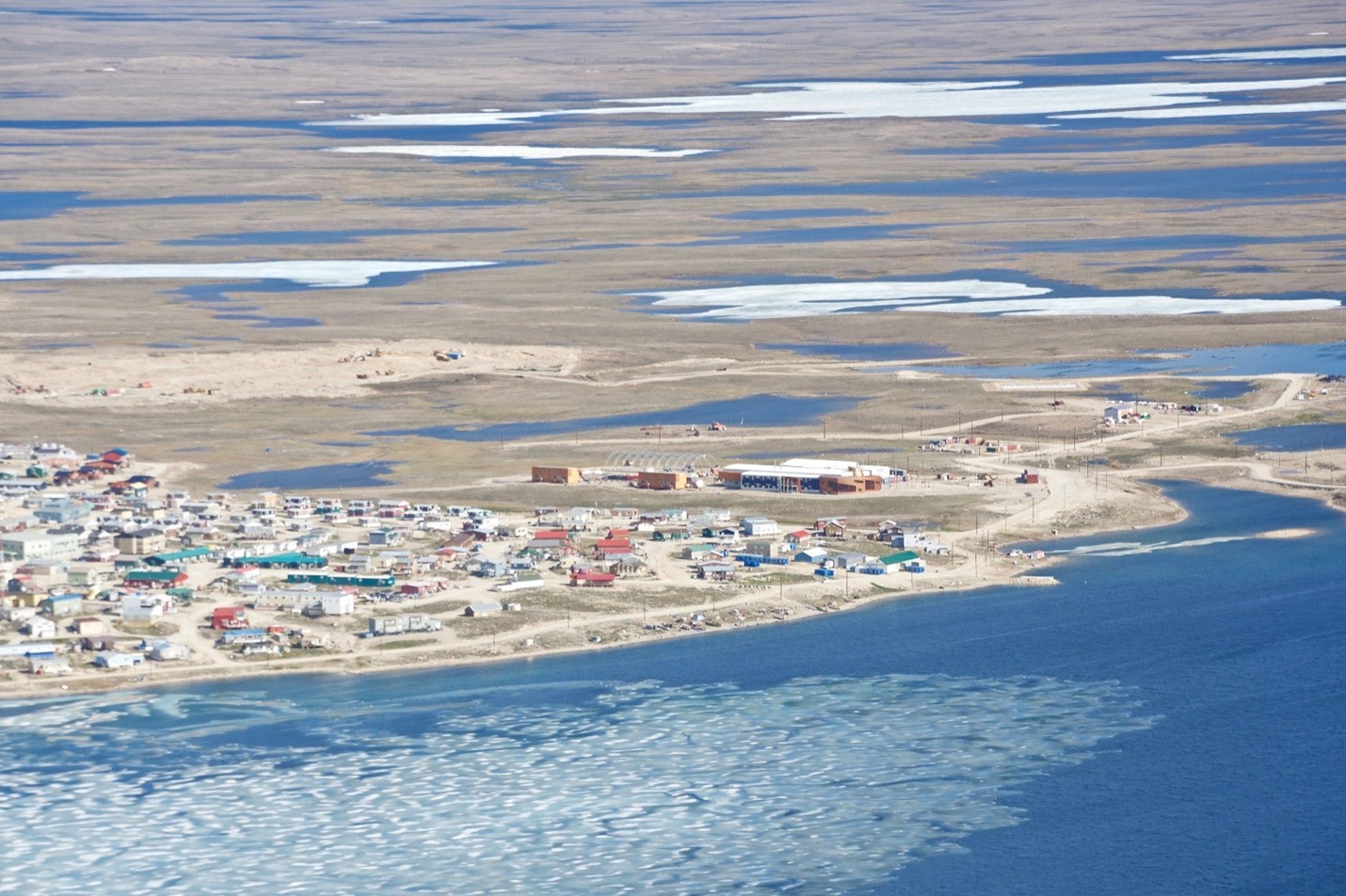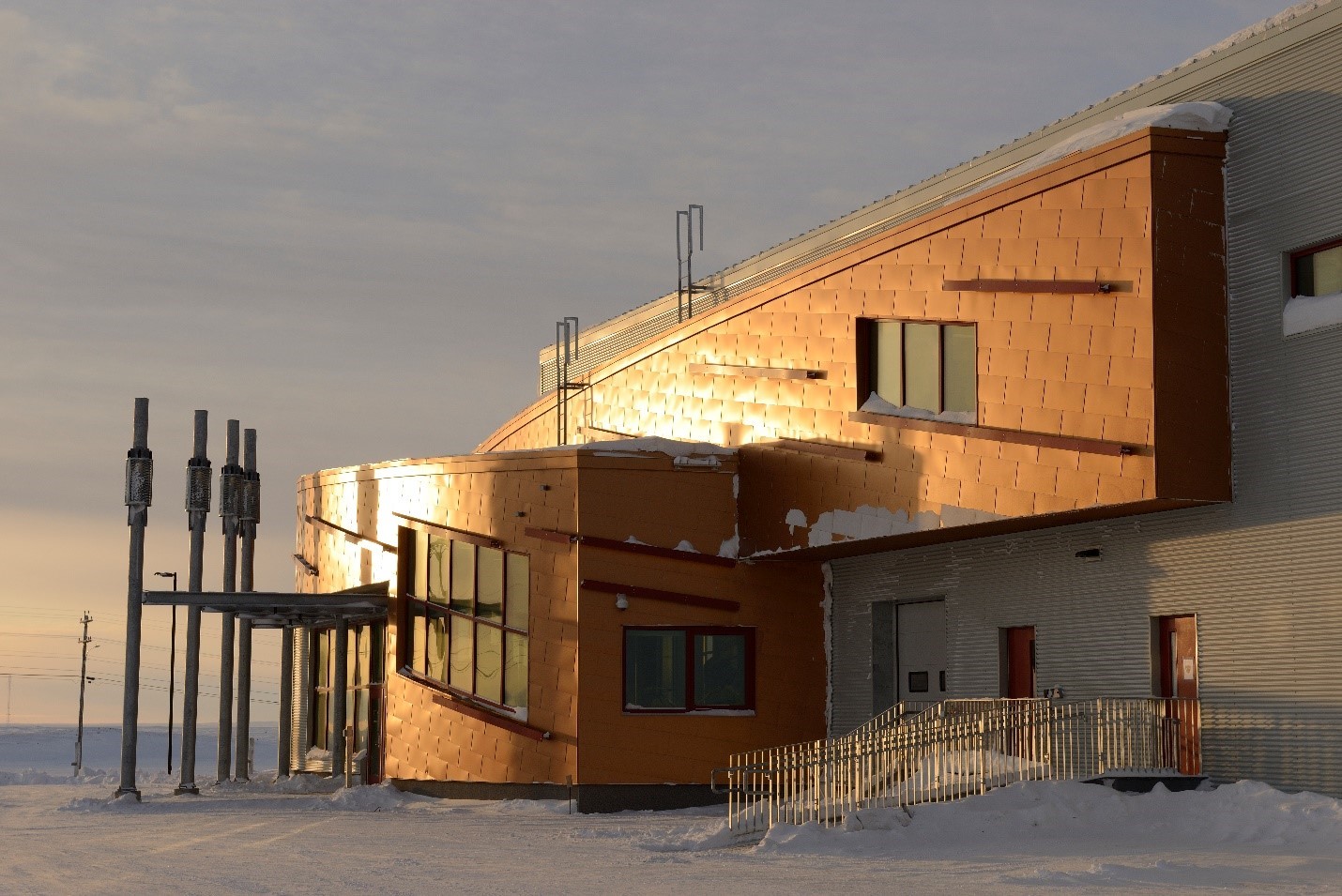Design and Construction
The Canadian High Arctic Research Station (CHARS)
CHARS provides researchers with accommodations and a wide range of technical services for their research needs. The Station was built to optimize innovation in Arctic science and technology in collaboration with Indigenous knowledge holders.
CHARS has welcomed visitors officially since 2019. Its design and construction are a result of close cooperation with community members, researchers, governments, organizations, and businesses in Cambridge Bay and across the North. Built by Indigenous and Northern Affairs Canada (now Crown-Indigenous Relations and Northern Affairs Canada), custodianship of the facility was transferred to Polar Knowledge Canada in June 2023.
Location
CHARS is located on a slope overlooking Cambridge Bay. Close to major infrastructure and the centre of town, it is an integral part of the community. The location is excellent for monitoring and research demonstration projects because it is near largely undisturbed tundra, wetland and freshwater ecosystems.

Photo: POLAR/J-F Lamarre
Design
Elements of Inuit culture guided and inspired the design. For example, the cladding and interior dome of the Main Research Building incorporate references to the ingenious architecture of the snowhouse (iglu), including its shape and the upward spiral pattern of its blocks. The copper colour used in public areas is a reference to the historical use of local copper by Inuit in the Cambridge Bay area, who once used it to make knives, harpoon heads, and other tools.

Photo: Janice Lang, DRDC-DND
Here are the complete floor plans of the CHARS.
Local benefits of construction
Canada used Inuit Benefit Plans to meet its procurement obligations, as specified in article 24 of the Nunavut Agreement, for the construction of the CHARS buildings, purchase of equipment, and leased housing.
This approach included implementing an Inuit Human Resources Plan that identifies:
- targets for Inuit labor force participation
- an Inuit Skills Development Plan for on-the-job training
- an Inuit Business Plan which provided for contracts to be awarded to Inuit-owned firms
As of August 2019, construction of the CHARS provided:
- Almost 246,000 hours of Inuit employment, valued at over $8 million;
- Skills development activities worth more than $800,000; and
- Over $65 million in construction contracts to firms registered with Nunavut Tunngavik Inc.
LEED gold certification
CHARS is striving for a gold certification in Leadership in Energy and Environmental Design (LEED), even though this designation is normally and more easily applied to southern environments.
In order to achieve LEED gold, the Labs21 Environmental Performance Criteria—a program with the goal of more sustainable, high-performance, and low-energy laboratories—was applied to the CHARS.
Working towards LEED gold means that the station includes features such as:
- bike racks
- low-flow fixtures
- ongoing monitoring of building systems
- wastewater and waste management
- managing light pollution
- energy reduction
- maintaining high level of air quality